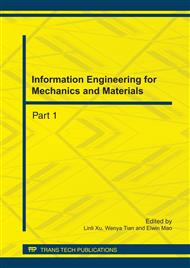p.616
p.621
p.626
p.631
p.638
p.643
p.649
p.654
p.661
Simulation Analysis of a Surface Crack Monitoring Sensor for Metallic Structures
Abstract:
There are some deficiencies in the former designed crack monitoring sensor, especially when crack initiates from both sides of hole. To solve this problem, a new scheme of the sensor is presented and corresponding finite element model (FEM) is established. Then the output characteristics of the sensor are analyzed by FEM. It is shown that the sensor is sensitive to cracks, and can be used to monitor the cracks initiating from the edge of the hole, no matter from left or right side. The relationship between crack length and sensor’s output is established by polynomial fitting, and it can be employed in further crack monitoring.
Info:
Periodical:
Pages:
638-642
Citation:
Online since:
July 2011
Authors:
Keywords:
Price:
Сopyright:
© 2011 Trans Tech Publications Ltd. All Rights Reserved
Share:
Citation:


